 Joined: 14/08/2003(UTC) Posts: 432 Location: Midtjylland
|
If needed (I do) - how do you extend the wires from example a turnout.
Do you actually extend them or do you change the wires that are too short ?
|
Steen
Digital | C-Track | Epoche II-IV | Railroad & Co. 7.0 Gold | IB 1 | LocoNet |
|
|
|
|
|
 Joined: 08/08/2003(UTC) Posts: 1,614 Location: Birmingham,Alabama
|
For me I would use digital decoders as much as possible to limit the need for running wires to accomplish things. |
Train Collection Insured by "Croc's" with "Big Boys" as Backup"
CS/MS Digital Era 1/2
Apple Man iPhone / Macbook Pro / iPad - the end of the windows PC occurred on April 4, 2010.
Love those Era 1 Tank Locomotives - the more the merrier.
|
|
|
|
|
|
 Joined: 17/04/2003(UTC) Posts: 997 Location: Netherlands
|
Hi Steen,
I normally solder the extensions.
If required I insulate the joint with shrink wrap.
best regards,
Gregor
|
|
|
|
|
|
Joined: 16/02/2004(UTC)
Posts: 15,463
Location: DE-NW
|
Hi, Steen!
I'd use a MRR plug and socket, but a lustre terminal could also be used (not really good for tiny MRR wires).
For a permanent layout, a soldered connection could also be used (with shrinkable tubes or on a board).
I'd extend the wires that are already there. |
Regards Tom --- "In all of the gauges, we particularly emphasize a high level of quality, the best possible fidelity to the prototype, and absolute precision. You will see that in all of our products." (from Märklin New Items Brochure 2015, page 1) ROFLBTCUTS 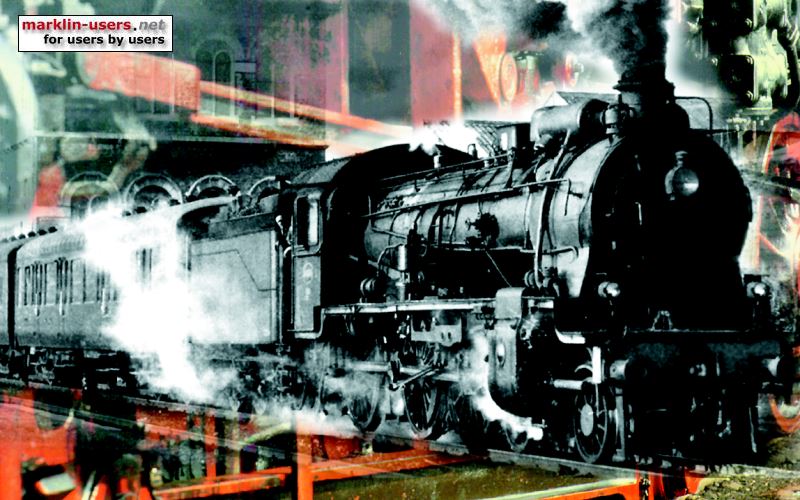 |
|
|
|
|
|
 Joined: 03/01/2003(UTC) Posts: 5,188 Location: Southern New Jersey, USA
|
I used to use plugs and sockets but found that soldering and shrink wrapping (as Gregor does) is much more reliable. If you are working under the board and bump a wire, sometimes the sockets and plugs disconnect. |
|
|
|
|
|
|
Joined: 25/07/2002(UTC)
Posts: 826
Location: Tallahassee, FL USA
|
I use plugs and sockets, it works for carpetbahn and will most likely do it whenever we do a permanent layout.--MM |
Michael Mascagni, Tallahassee
If I weren't a Mathematician, I'd be a Violinist.--Albert Einstein |
|
|
|
|
|
 You have been a member since:: 16/08/2006(UTC) Posts: 5,382 Location: Akershus, Norway
|
I always solder the extensions. Quick and easy, also to "un-solder" later on. |
Best regards Svein, Norway
grumpy old sod
|
|
|
|
|
|
Joined: 10/02/2004(UTC)
Posts: 2,162
Location: Portugal
|
Another solder + shrink wrap vote, using the existing wires.
|
|
|
|
|
|
Joined: 27/10/2006(UTC)
Posts: 692
Location: Italy
|
Solder and shrink wrap, a must! |
Alessandro
I have a CS1 Reloaded! |
|
|
|
|
|
 Joined: 12/01/2002(UTC) Posts: 2,578 Location: Sweden
|
Solder + shrink wrap is a good method, but personally I have replaced all turnout wires with 3-pole flat cable and mounted 3-pole contacts on them. I use computer cablage contacts.
|
|
|
|
|
|
 Joined: 14/03/2005(UTC) Posts: 15,871 Location: Gibraltar, Europe
|
Soldering is the most reliable, but can be difficult and possibly dangerous if working upside down under a baseboard.
I use screw terminal strips, the smallest I can find, which makes it easier to disconnect if you change your mind, or want to isolate a circuit.
If you use plugs and sockets, make sure they are all from the same manufacturer. I find some varieties look similar, but are a loose fit in the Marklin sockets.
Ray |
Ray
Mostly Marklin.Selection of different eras and European railways
Small C track layout, control by MS2, 100+ trains but run 4-5 at a time.
|
|
|
|
|
|
 Joined: 23/08/2004(UTC) Posts: 764 Location: Bury St. Edmunds, Suffolk
|
Plugs and sockets if you have enough of them. Otherewise twist the wires together and cover with black insulating tape. Alright very amateurish but it works for me.
regards
|
Regards
Geoff (UK)
marklin HO from the 50's and 60's |
|
|
|
|
|
 Joined: 18/03/2007(UTC) Posts: 6,765 Location: Brisbane, Australia
|
I purchase the Märklin 71400 plug and socket set, it is easy to screw in the wires without soldering, and then plug them together. The set comes with 5 different coloured plugs/sockets. I make up standard sets of wire about 1.2 metres long, male plug at one end, and female socket at the other end. You can get unlimited lengths by plugging them together (like a mains lead). 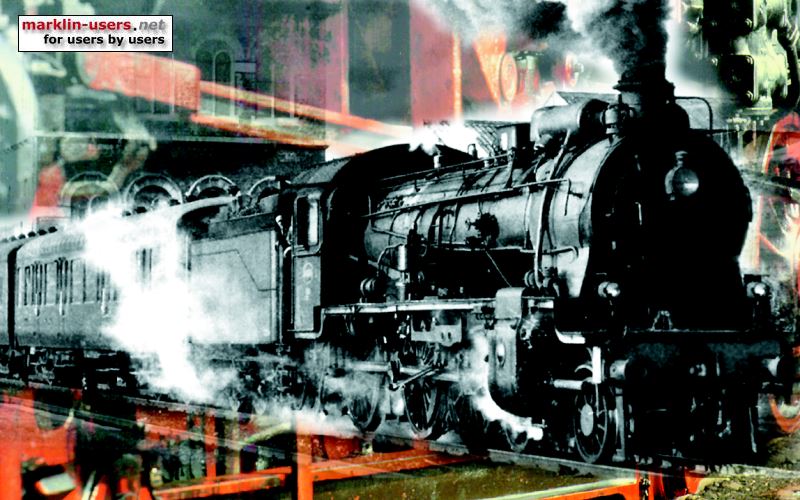 I also use the 72090 distribution strip, which is compatible with the above plugs. It is has 12 possible connections, this allows running multiple wires from a single source. I label each distribution strip for its application. One for "B", for bahnstrom, track power, is for red wires. And one for "O" for ground, running rails, is for brown wires. And another for auxiliary function is for yellow wires. 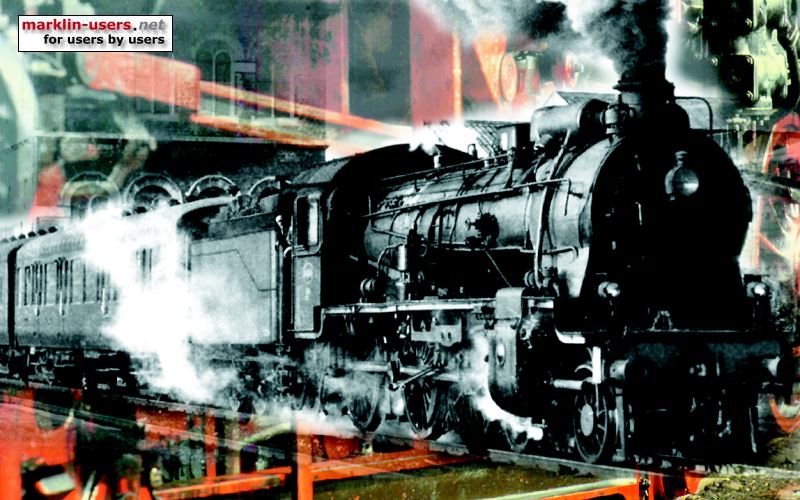 As Ron suggests above, occasionally you do accidently disconnect a plug/socket, but I find that happens rarely. The convenience of the Märklin system makes up for that I feel. regards Kimball Edited by moderator 11 January 2011 19:53:28(UTC)
| Reason: Not specified |
HO Scale - Märklin (ep II-III and VI, C Track, digital) - 2 rail HO (Queensland Australia, UK, USA) - 3 rail OO (English Hornby Dublo) - old clockwork O gauge - Live Steam 90mm (3.1/2 inch) gauge. |
|
|
|
|
|
Joined: 01/02/2008(UTC)
Posts: 414
Location: Melbourne, Victoria
|
Im voting for solder + shrink wrap  As mentioned though, never do it directly above you as dropping the sodering iron could be disastorous. If you are forced to make joins and you cant work on your knees for example then I would use terminal strips. |
Ep IV / V Marklin Layout
6 track dead end station, twin track loop, 4 track through station.
Under construction. |
|
|
|
|
|
 Joined: 11/10/2006(UTC) Posts: 2,151 Location: istanbul,
|
Hi,
I just twist the wires and use shrink tube over it. Works perfect - with less hassle.
Cem. |
|
|
|
|
|
|
 Joined: 17/09/2006(UTC) Views messages in topic : 18,778 Location: New Zealand
|
Quote:[size=1" face="Verdana" id="quote]quote:Originally posted by laalves
<br />Another solder + shrink wrap vote, using the existing wires.
Ditto here!
|
|
|
|
|
|
 Joined: 14/08/2003(UTC) Posts: 432 Location: Midtjylland
|
Thank you all !!!
Good advises to choose from :-) |
Steen
Digital | C-Track | Epoche II-IV | Railroad & Co. 7.0 Gold | IB 1 | LocoNet |
|
|
|
|
|
Joined: 12/08/2006(UTC)
Posts: 9,289
|
The most cheapest and easy to extend wires is to solder wires.
Goofy |
H0
DCC = Digital Command Control
|
|
|
|
|
|
Joined: 18/06/2003(UTC)
Posts: 3,023
Location: Chennai, Tamil Nadu, INDIA
|
Hi All,
What is this process of 'shrink wrap'? I usually twist the wires, solder the connection and apply an insulating tape over it. I also use the process that Kimball has mentioned. It works fine.
Hey Frostie, how does the digital decorder work for this application?
Cheers,
Ranjit |
Modelling in HO Scale - Era III & IV. K+M Track, Analogue + Digital
_____________________________________________________________________________
#Get Vaccinated
--------------------------------------------------------------------------------------------------------------
"If you have a garden and a library, you have everything you need" - Marcus Tullius Cicero
"Nothing is as powerful as an idea whose time has come" - Victor Marie Hugo
"If you can dream it, you can do it" - Walt Disney |
|
|
|
|
|
Joined: 01/02/2008(UTC)
Posts: 414
Location: Melbourne, Victoria
|
Shrink wrap (or heat shirnk tubing) is a type of plastic that shriks when heated (usually by placing a soldering iron near but NOT ON the tube). In this case we are talking about using a piece of tube that slips over the wire before it is joined, then after the join is made it is slipped over the joint and heated so that it clings tightly to the joint and cannot move. Tape works just as well its just a little bit fiddly and the glue can eventually lose its stick and fall off. |
Ep IV / V Marklin Layout
6 track dead end station, twin track loop, 4 track through station.
Under construction. |
|
|
|
|
|
Joined: 18/06/2003(UTC)
Posts: 3,023
Location: Chennai, Tamil Nadu, INDIA
|
Hi Caillin,
Thank you for the info. Is the tube just a piece of insulation (w/o the wire) or is it made of any special material?
Cheers,
Ranjit |
Modelling in HO Scale - Era III & IV. K+M Track, Analogue + Digital
_____________________________________________________________________________
#Get Vaccinated
--------------------------------------------------------------------------------------------------------------
"If you have a garden and a library, you have everything you need" - Marcus Tullius Cicero
"Nothing is as powerful as an idea whose time has come" - Victor Marie Hugo
"If you can dream it, you can do it" - Walt Disney |
|
|
|
|
|
Joined: 01/02/2008(UTC)
Posts: 414
Location: Melbourne, Victoria
|
|
Ep IV / V Marklin Layout
6 track dead end station, twin track loop, 4 track through station.
Under construction. |
|
|
|
|
|
 Joined: 17/09/2006(UTC) Views messages in topic : 18,778 Location: New Zealand
|
Ranjit you should be able obtain heatshrink from any good electronics retail store. Here in NZ and Oz Dick Smith Electronics and Jaycar are two such stores that carry these items. You can buy heatshrink in a variety of sizes and colours, usually starting around 2mm.
|
|
|
|
|
|
 Joined: 18/09/2004(UTC) Posts: 726 Location: Cape Town
|
Make sure you have a good heat gun for perfect results... |
Regards Tony |
|
|
|
|
|
 Joined: 23/02/2005(UTC) Posts: 801
|
I use small plug and socket for my C track turnouts.
The turnout wires are shortened to about 15 cm and soldered on the plug. The socket is fixed on the board, under the turnout . The plug , socket and wires are hiden by the C track bed.
Fred
|
|
|
|
|
|
 Joined: 18/03/2007(UTC) Posts: 6,765 Location: Brisbane, Australia
|
Efel has raised a good point here. The Märklin C track is so well designed, it is excellent for running the wires under, without having to drill through the baseboard. Underside of track has special plastic lugs to grip the wire. The Märklin wire sets with the spade plugs, slide on the C track contacts. I also purchase spade connectors separately, item #74995. 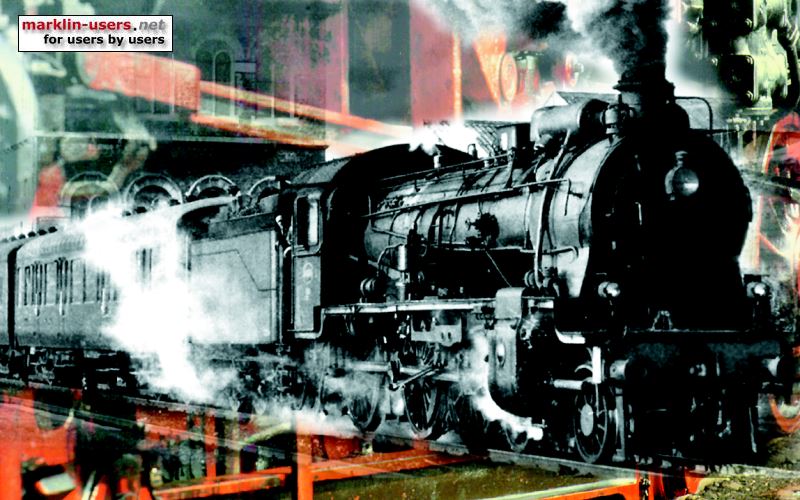 I screw the plugs/sockets on the ends where I need to run them under the baseboard. regards Kimball |
HO Scale - Märklin (ep II-III and VI, C Track, digital) - 2 rail HO (Queensland Australia, UK, USA) - 3 rail OO (English Hornby Dublo) - old clockwork O gauge - Live Steam 90mm (3.1/2 inch) gauge. |
|
|
|
|
|
 Joined: 14/03/2005(UTC) Posts: 15,871 Location: Gibraltar, Europe
|
With my old layout using M track, I used this approach, with all the wiring tucked under the trackbed.
The problem with this is when you get a fault or want to add something new. I had a problem with an uncoupling track once, and had to rip up a couple of metres of track just to find the joints in the cables.
When I laid the C track on my new layout, I drilled holes under every device and passed the cables through. Now all my wiring is accessible from underneath if I have a problem.
Ray |
Ray
Mostly Marklin.Selection of different eras and European railways
Small C track layout, control by MS2, 100+ trains but run 4-5 at a time.
|
|
|
|
|
|
 Joined: 26/03/2006(UTC) Posts: 1,423 Location: Brisbane, QLD
|
Quote:[size=1" face="Verdana" id="quote]quote:Originally posted by Tony
<br />Make sure you have a good heat gun for perfect results...
A hair-dryer on the hottest setting usually works well. Just be careful not to melt the insulation on the wire... |
Cheers,
Damon |
|
|
|
|
|
 Joined: 17/04/2003(UTC) Posts: 997 Location: Netherlands
|
I prefer to use the soldering iron for the shrinking. Not the tip itself, but 2 cm below the tip, because the tip is too hot and will melt the shrink wrap. This way I only need to carry 1 piece of electrical equipment while crawling underneath the layout.
Best regards,
Gregor
|
|
|
|
|
|
 Joined: 10/02/2006(UTC) Posts: 3,997
|
You will not catch me trying to solder wires under the layout! I do my soldering at the workbench. For connecting small contact and turnout wires under the layout I use 3M Scotchlock UY connectors, also called butt connectors and the UY ones handle wire sizes 22 - 26 AWG
These connectors allow 2 or 3 wires to be inserted and then they are closed with a pair of pliers. The internal metal teeth connect the wires. No stripping needed ! It is very quick, and very reliable. Some even have a type of gel inside that fills the spaces around the wires when it is closed to prevent corrosion over time. |
|
|
|
|
|
|
 Joined: 19/11/2007(UTC) Posts: 2,835 Location: Northern California,
|
Solder and wrap, under the display if needed. No problem. Just be careful and use a small wattage iron. Bob |
Robert's trains insured by Colt 45--Marklin Club of NorCal, Founder and Sole Member--- Robert's photos may be used as public domain-all copyrights waved
"All tyranny needs to gain a foothold is for people of good conscience to remain silent"-T.Jefferson
|
|
|
|
|
|
 Joined: 01/03/2009(UTC) Posts: 1,339 Location: USA
|
Quote:[size=1" face="Verdana" id="quote]quote:Originally posted by DaleSchultz
<br />You will not catch me trying to solder wires under the layout! I do my soldering at the workbench. For connecting small contact and turnout wires under the layout I use 3M Scotchlock UY connectors, also called butt connectors and the UY ones handle wire sizes 22 - 26 AWG
These connectors allow 2 or 3 wires to be inserted and then they are closed with a pair of pliers. The internal metal teeth connect the wires. No stripping needed ! It is very quick, and very reliable. Some even have a type of gel inside that fills the spaces around the wires when it is closed to prevent corrosion over time.
Dale. There is a nice article in the special #6 issue of Model Railroader, pg. 42 about the 3M Scotchlok IDC's. (3M part #567 and #558) I'm wondering what gauge wire did you run as bus wire from your transformers around the layout, and then which gauge for the feeder line to the track? for those who are interested: http://www.ptsupply.com/pdf/3m_Scotchloks.pdfhttp://solutions.3m.com/...4CHZT2876CbeH8665PJ911glhttps://www.micromark.co...PINK-PKG-OF-25,8998.htmlRegards, Thomas |
ETE  ECoS iTrain TouchCab C-Gleis German Era Id & IIIb USA Era IIIb SBB Era III SJ Era IV GC Era V |
|
|
|
|
|
 Joined: 03/11/2007(UTC) Posts: 2,764
|
Depending on what I have to extend.
For signals (Viessmann) I normally use plugs and sockets, which makes it easier to remove the signal in case of maintenance on the tracks or the signal.
Turn-outs and so on, twist and insulate (works ok for me).
|
|
|
|
|
|
|
 Joined: 09/02/2008(UTC) Posts: 972 Location: North Wiltshire
|
I use chocolate blocks underneath and connect to the automatic and/or manual control switches from there. I glue the blocks to the underside using a glue gun.
I find this works well because there's no strain on the cabling (which is quite fragile on Z gauge turnouts etc., and it makes it easier to connect turnouts that operate together. |
Living on Earth is expensive, but it does include a free trip around the sun every year.
Z Scale is great - where's me glasses? |
|
|
|
|
|
Joined: 09/12/2005(UTC)
Posts: 315
Location: Ohio, USA
|
I use the plugs and sockets when I plug many items together and I use the solder and wrap if I am extending wires.
|
|
|
|
|
|
Joined: 10/11/2006(UTC)
Posts: 455
Location: Pacific Ocean
|
Very easy, very reliable, and very cheap- now if I can just figure out a good way to hold it up. 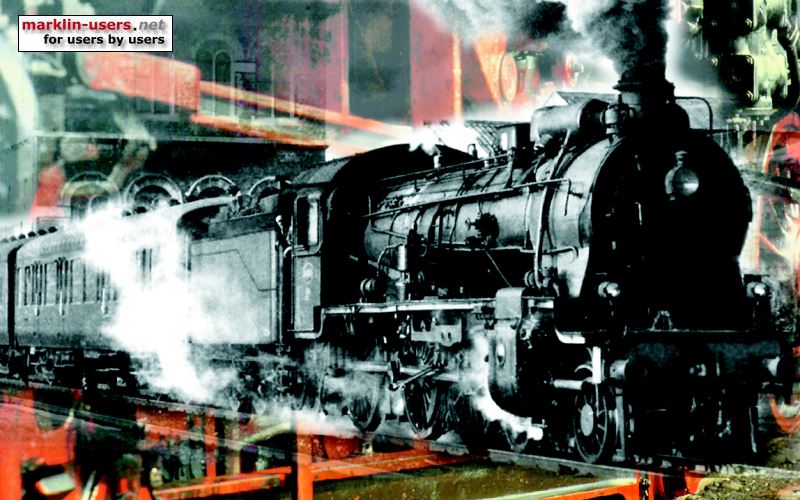
|
|
|
|
|
|
 Joined: 27/08/2005(UTC) Posts: 11,071 Location: Murrumba Downs QLD
|
I use Solder and Shrink wrap to lengthen wires and when they get connected I usually use the Marklin Plugs and distribution Blocks. great for bring 16 Positive wires to one place. easy connection as Kimball said previously. |
NOt wearing the Pink Pinny, which is hard to see and now I have a white Pinny which also is hard to see against MY pure white Skin Still have 2 new shiny tin Hips that is badly in Need of Repair matching rusting tin shoulders
and a hose pipe on the aorta
Junior member of the Banana Club, a reformist and an old Goat with a Bad memory, loafing around |
|
|
|
|
|
Forum Jump
You cannot post new topics in this forum.
You cannot reply to topics in this forum.
You cannot delete your posts in this forum.
You cannot edit your posts in this forum.
You cannot create polls in this forum.
You cannot vote in polls in this forum.